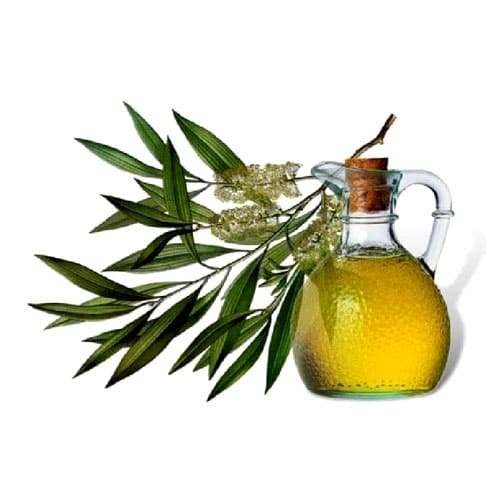Tea Tree Oil

Product Description
Tea Tree OilIt is a small tree from New South Wales in Australia, similar to Cypress, with needle-like leaves and heads of sessile yellow or purplish flowers and grows to about 7 meters (20 feet) high.
| Product Details | ||
|---|---|---|
| Form | Liquid | |
| Packaging Type | Bottle | |
| Plant Part Used/Extracted From | Leaves and Twigs | |
| Usage/Application | Pharma & Cosmetic | |
| Botanical Name | Melaleuca Alternifolia |
| Extraction Method | Steam Distillation |
| Purity | 100 % |
| Color | Colourless to Pale Yellow |
| Odour | Characteristic and Aromatic |
| Product Name | Tea Tree Oil | Family | Myrtaceae |
| Description & extraction | It is a small tree from New South Wales in Australia, similar to Cypress, with needle-like leaves and heads of sessile yellow or purplish flowers and grows to about 7 meters (20 feet) high and thrives in marshy areas, though it is now cultivated in plantations. It has a light spicy, rather pungent smell and is very pale in color with a watery viscosity. Tea tree oil is extracted from Melaleuca alternifolia of the Myrtaceae family and is also known as ti-tree, ti-trol and melasol. It is extracted from the Leaves and twigs by steam distillation and the yield is about 1.8%. Blends well with:Tea tree essential oils normally blend well together, tea tree oil blends particularly well with cinnamon, clary sage, clove, geranium, lavender, Lemon, myrrh, nutmeg, rosewood, rosemary and thyme |
| Chemical Components | Chemical Components:The main chemical components of tea tree oil (also referred to as ti-tree oil) are a-pinene, b-pinene, sabinene, myrcene, a-phellandrene, a terpinene, limonene, 1,8-cineole, y-terpinene, p-cymene, terpinolene, Linalool, terpinen-4-ol and a-terpineol. |
| Toxicological Properties | Tea tree oil are antimicrobial, antiseptic, antiviral, balsamic, bactericide, cicatrisant, expectorant, fungicide, insecticide, stimulant And sudorific. |
| Appearance | Fluid liquid Mobile at 20oc |
| Colour | Colorless to pale yellow |
| Odour | Characteristic odour of Tea Tree odour |
